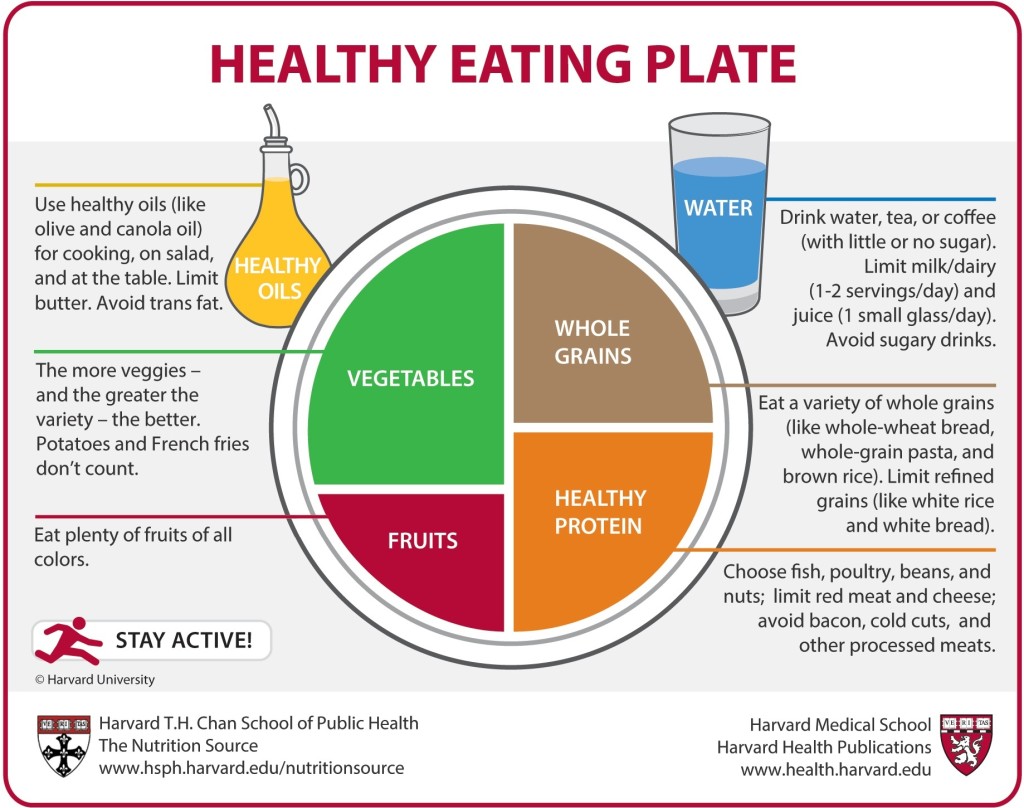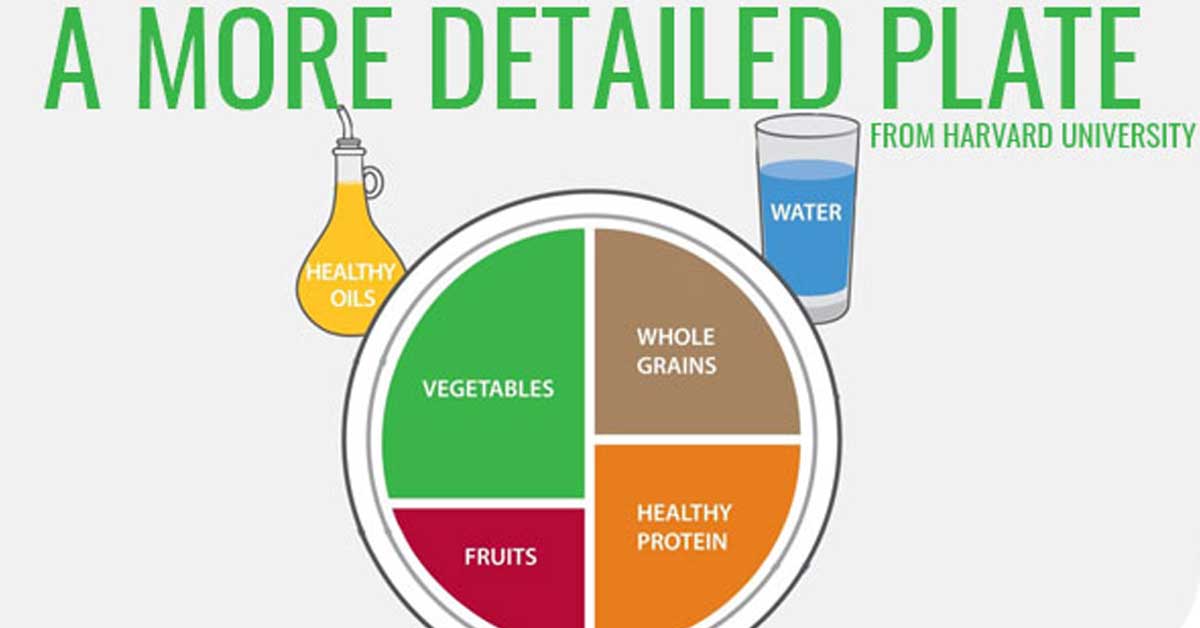In 2020, the USDA and HHS released their Dietary Guidelines for American’s, a publication that undergoes minor yearly updates with major changes occurring every 5 years.
Over the years, Harvard University has worked to create more frequent revisions resulting in their “Healthy Eating Plate” guidelines we have today. This mimics the layout the USDA publishes as a part of their “MyPlate” campaign.

Walter Willett of Harvard University said the existing USDA guidelines are “helpful in offering a general gestalt about healthy eating, but we need something more detailed that tells us how healthy this particular food is.”
What Willett is drawing attention to is the different nutritional values foods have, even within the same categories. Carbohydrates are a great example of this as vegetables, fruits, whole grains, and beans often are healthier than other available carbohydrates.
Do the plate tiles represent calories or proportions?
The Harvard plate does not represent the number of calories you should consume, rather it is the size proportions of the food. Thus vegetables should be the largest food group in relation to the size on your plate – not the largest source of calories.
So what’s the difference?
Compared to the popular ChooseMyPlate.gov design, the Harvard plan calls for a decrease in grains (noting that it should be “whole grains”) and an increase in healthy protein. As mentioned earlier in the case of carbohydrates, there are varying degrees of quality to the protein foods you consume. The same applies to processed meat like bacon and salami which is not considered meat for the purpose of these guidelines.
The biggest changes come with what is outside the plate. The Harvard plate includes water rather than milk, with a note about limiting milk to 1 to 2 servings per day.
Additionally, the Harvard plate is unique in including healthy oils. A couple of great choices for this are olive and other plant-based oils that are rich in heart-healthy unsaturated fats. You will want to avoid trans fats and butter.
Lastly, a small point, but the Harvard plate is the only to add a note to “stay active” because as we know healthy eating is just one part of a healthy lifestyle.
The base of a healthy diet
The pillars of a healthy lifestyle in the Harvard plan consist of exercise, a focus on plant foods, a decrease in sugary staples, and consideration for a multivitamin if needed.
How can you eat more vegetables and fruits?
- Keep vegetables and fruits out so you can see them
- Try something new in the produce aisle
- Try to avoid potatoes as other vegetables are often more nutrient dense
- Use recipes where vegetables are the main ingredients
- Get picky with your condiments as ketchup may seem like an easy way to add tomatoes to your diet, but it is often loaded with sugars
Why do the recommendations differ from one organization to another?
As Harvard states in their article on the topic, their “Healthy Eating Plate is based exclusively on the best available science and was not subject to political or commercial pressures from food industry lobbyists.”
Learn more with the 18 page Harvard Food Literacy Project eBook


